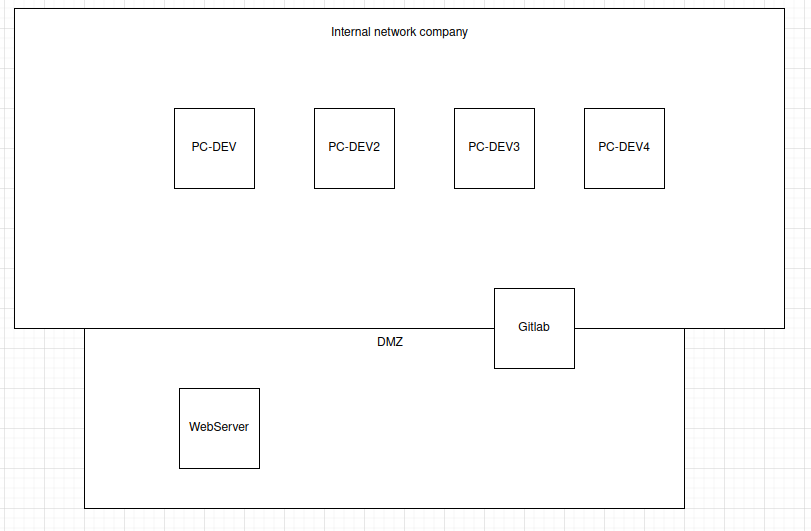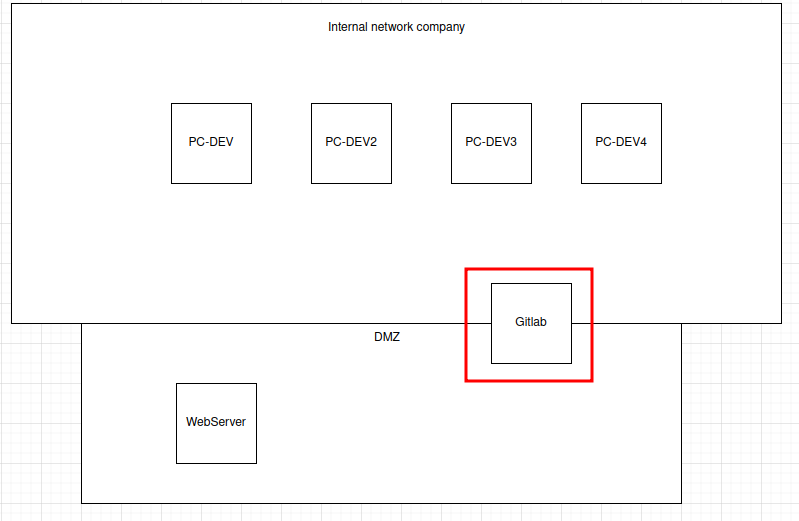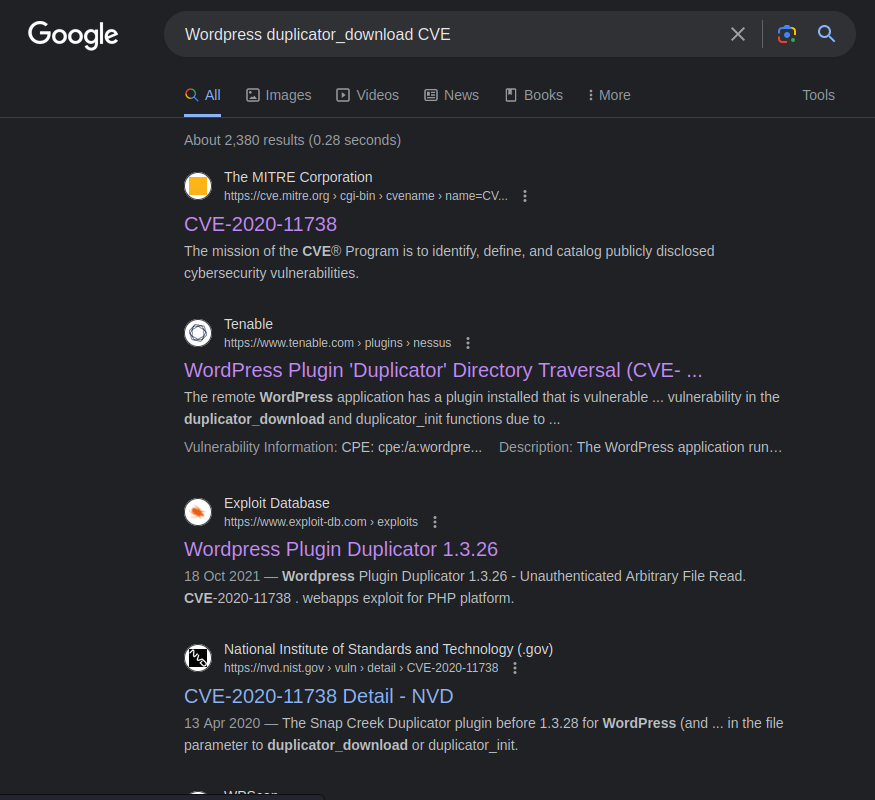dev.corp 1/4
Table of Contents
Overview
- 258 solves / 50 points
- Difficulty: Easy
- Overall difficulty for me (From 1-10 stars): ★☆☆☆☆☆☆☆☆☆
Background
The famous company dev.corp was hack last week.. They don't understand because they have followed the security standards to avoid this kind of situation. You are mandated to help them understand the attack.
For this first step, you're given the logs of the webserver of the company.
Could you find :
- The CVE used by the attacker ?
- What is the absolute path of the most sensitive file recovered by the attacker ?
Format : Hero{CVE-XXXX-XXXX:/etc/passwd}
Author : Worty
Here is a diagram representing the company's infrastructure:

Find the flag
In this challenge, we can download a file:
┌[siunam♥earth]-(~/ctf/HeroCTF-v5/Forensic/dev-corp-1-4)-[2023.05.13|15:17:07(HKT)]
└> file access.log
access.log: ASCII text, with very long lines (455)
┌[siunam♥earth]-(~/ctf/HeroCTF-v5/Forensic/dev-corp-1-4)-[2023.05.13|15:17:09(HKT)]
└> wc -l access.log
1856 access.log
It's a webserver access log.
In the company's infrastructure's diagram, we can see that it has a Gitlab service:

Hmm… Let's search for git in the access.log:

Right off the bat, we see something weird.
Someone sent 4 requests to /shell and /.git. However, those requests response a 404 Not Found HTTP status. Let's move on!

Then, I found the /.git requests again. But this time, it responses a 200 OK HTTP status.
Also, there's a very sussy GET request in /wp-admin/admin-ajax.php:
internalproxy.devcorp.local - - [02/May/2023:13:12:29 +0000] "GET //wp-admin/admin-ajax.php?action=duplicator_download&file=../../../../../../../../../etc/passwd HTTP/1.1" 200 2240 "-" "Mozilla/5.0 (X11; Ubuntu; Linux x86_64; rv:104.0) Gecko/20100101 Firefox/104.0"
The file GET parameter is a payload for Directory Traversal.
Let's search for "Wordpress duplicator_download CVE":

Nice! We found the CVE number: CVE-2020-11738.
This WordPress Duplicator plugin is vulnerable to Directory Traversal!
Now, we can use duplicator_download to search which files are being recovered by the attacker!

Oh no! The attacker retrieved the webuser private SSH key!!! Which means he/she can access the web server if the SSH service is enabled!
- Flag:
Hero{CVE-2020-11738:/home/webuser/.ssh/id_rsa}
Conclusion
What we've learned:
- HTTP Access Log Forensic